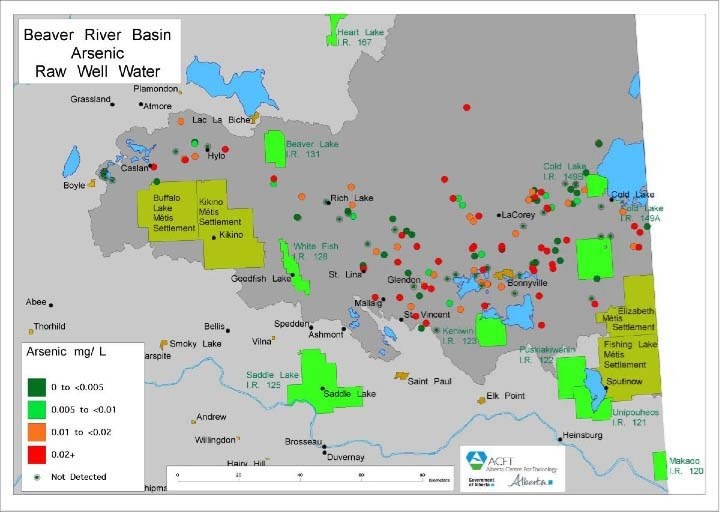High levels of arsenic continue to be found in raw well water across the Beaver River Basin, according to a recent report released by Alberta Health.
Only 52 per cent of raw well water samples had arsenic levels under the recommended health guideline value, meaning almost half of the raw samples tested for high levels of arsenic.
“Arsenic in raw well water is a major issue in this region,” said Harry Keess, program manager with the Beaver River Watershed Alliance. “The report has a series of maps that show what the levels of arsenic are in raw water across the province. There are a lot of (higher levels) in this region compared to (the levels) in the southern parts of the province.”
The Beaver River Basin includes the Municipal District of Bonnyville, St. Paul County, Lakeland County and Smoky Lake County. The basin has naturally occurring arsenic levels, which come out of the underlying bedrock in the area. According to the report, arsenic levels in the Beaver River Basin haven't changed much since 1999.
“I think (the report) confirmed what we already knew. It put it out there in the public just to emphasize that residents still need to get their well water tested,” said Albert de Villiers, Medical Officer of Health for the North Zone with Alberta Health Services. “If you've got a private well make sure you get it tested specifically for the minerals and the chemicals to make sure what you are drinking is safe.”
Although the report stated the potential health risks resulting from drinking arsenic-contaminated water at the measured level is low, it still recommends well owners get their water tested and treated to reduce the arsenic levels as they can change.
“The (arsenic) levels can change,” said de Villiers. “Usually the levels don't change, but they can change as the aquifer levels go up and down underneath the ground and the water levels go up and down. So private well owners should make sure you get your well water tested at least once or twice a year.”
Keess added, “The report highlights that treatments such as reverse osmosis and distillation of water will reduce arsenic. I also think it is important that even though you may be able to reduce your arsenic to below the health guideline level, to still minimize exposure to arsenic despite that.”
The 100-page report titled, Domestic Well Water Quality in the Beaver River Basin, is a collection of results from in-depth testing done on the well water in the region.
The high levels of arsenic were one of the key findings from the report along with the idea that health risks could occur from having too hard or too soft of water.
“We have very, very hard raw water up here. One of the findings was that using water softeners may cause the treated water to become too soft,” said Keess. “I think one of the most important recommendations from this report is that using softened water for consumption is not very advisable. It is still good for non-consumption activities, but well owners should look into having some alternative piping put in to make sure that there is not a high level of softener getting into their drinking water.”
The report stated that there might be an increased potential risk for cardiovascular health effects if private well owners consume soft water containing very low levels of calcium and magnesium, or very high levels of sodium and potassium. These high or low levels can be a caused as a result of using a water softener for a long time.
Keess thought the report was a great reminder for the region and hoped that it gets well owners to make it a priority to get their well water tested.
“I think that overall it is a good report. It sheds a lot of light on the situation here,” said Keess. “I think going forward getting more technical advice and having more public awareness of improving well water quality will happen in the long run.”
The full report can be found in the newsroom section of the Alberta Health website under the Environmental Health tabs.



